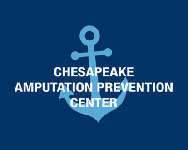
For many older adults, even a small blister or cut on the foot can quickly escalate into a serious health concern, though you might not initially consider it significant. Age-related changes, such as slower healing, decreased circulation, and chronic conditions like diabetes, make seniors far more vulnerable to foot wounds and infections. When these wounds go untreated, they can lead to chronic pain, mobility loss, and, in severe cases, amputation.
At Annapolis Foot & Ankle Center, we believe that healthy feet are essential to living a healthy life. Our board-certified podiatrists take a holistic approach that considers not only your feet, but also your circulation, nutrition, and overall well-being. By understanding how aging affects foot health and taking proactive measures, seniors and caregivers can help prevent wounds, promote healing, and preserve independence.
How Aging Affects Senior Foot Health
Aging brings natural changes to the feet that can increase the risk of wounds and other problems. Skin loses elasticity and moisture, making it thinner and more prone to cracking. The fat pads that cushion the bottoms of the feet shrink, leading to more friction and pressure when walking.
Circulation also tends to decline with age, especially in individuals with peripheral artery disease or diabetes. Poor circulation limits the amount of oxygen and nutrients that reach damaged tissues, slowing healing and making the skin more susceptible to infection.
Meanwhile, balance and mobility often decrease over time, increasing the risk of falls or repetitive pressure on certain areas of the feet. For older adults who spend long hours sitting or lying down, this pressure can lead to sores and ulcers that take months to heal.
The most common risk factors for foot wounds among seniors include:
- Diabetes. High blood sugar damages nerves and blood vessels, reducing the body’s ability to heal.
- Peripheral neuropathy. Loss of sensation in the feet means wounds often go unnoticed until they become severe.
- Poor circulation. Reduced blood flow prevents proper wound healing.
- Limited mobility. Lack of movement creates pressure points that lead to skin breakdown.
- Ill-fitting shoes. Footwear that’s too tight or too loose can rub, blister, or cut delicate skin.
Common Foot Wounds That Affect Older Adults
Knowing what types of wounds to watch for can help seniors and caregivers take action early, before an infection sets in.
Diabetic Foot Ulcers
These open sores often form on the bottoms of the feet or near areas of heavier pressure. Because diabetic neuropathy reduces feeling, patients may not realize an ulcer has developed until it becomes infected. Left untreated, diabetic foot ulcers can lead to tissue death and even amputation. At Annapolis Foot & Ankle Center’s Chesapeake Amputation Prevention Center, we use advanced wound therapies to promote healing and protect limb health.
Venous Stasis Ulcers
Venous ulcers are caused by poor circulation in the legs, typically appearing around the ankles. When valves in the leg veins weaken, blood pools in the lower legs, creating swelling and tissue breakdown. These wounds are often painful and slow to heal without professional care.
Pressure Ulcers (Bedsores)
Seniors with limited mobility or those confined to bed are at risk of developing pressure ulcers on their heels or ankles. These occur when prolonged pressure or friction causes skin and tissue damage.
Traumatic Wounds
Minor cuts, scrapes, and punctures can turn serious quickly for older adults, especially those with diabetes or vascular disease. Because nerve sensitivity declines with age, seniors may not notice these injuries until infection has already begun.
Warning Signs That Require Medical Attention
Even a small wound deserves immediate medical attention if you notice any of the following:
- Redness or warmth around the area
- Drainage, pus, or a foul odor
- Swelling or discoloration
- Persistent pain or numbness
- Fever or chills
Prevention: The Best Approach to Senior Foot Wound Care
Foot wound care begins long before an injury occurs. The following preventive steps can make a major difference in maintaining senior foot health:
- Inspect your feet daily. Check for cuts, redness, swelling, or blisters. If needed, use a mirror or ask a caregiver for help.
- Keep feet clean and dry. Wash gently with mild soap and warm water, then dry thoroughly, especially between the toes.
- Moisturize properly. Apply lotion to prevent cracking, but avoid putting lotion between the toes, where moisture can lead to fungal infections.
- Wear the right shoes. Choose soft, supportive shoes that fit well and don’t create friction. Consider orthotic inserts or diabetic footwear for added protection.
- Trim nails carefully. Cut straight across and file sharp edges to prevent ingrown toenails.
- Control blood sugar and blood pressure. Good metabolic health improves circulation and healing.
- Stay active. Gentle exercises such as walking or ankle circles boost blood flow and reduce swelling.
Routine podiatric exams are just as important as daily home care. A podiatrist can detect circulation issues, nerve damage, and pressure points that may lead to wounds and address them before they become serious.
Advanced Treatment Options for Foot Wounds
State-of-the-art treatments are designed specifically for seniors and individuals with chronic conditions. Your doctor will tailor each wound care plan should to your overall health, lifestyle, and healing capacity.
Advanced wound care therapies may include:
- Debridement. Removing dead or infected tissue to allow new, healthy tissue to grow.
- Antimicrobial dressings. Specialized bandages keep the wound clean and prevent infection.
- Compression therapy. Improves circulation for those with venous insufficiency.
- Offloading devices. Custom shoes or casts relieve pressure from wounds so they can heal.
- Regenerative medicine. Biologic grafts, skin substitutes, and growth factors encourage tissue repair.
- Hyperbaric oxygen therapy and vascular evaluation. These techniques enhance oxygen delivery and identify circulation issues that may hinder healing.
Our Chesapeake Amputation Prevention Center provides comprehensive wound management for diabetic and high-risk patients. This multidisciplinary program combines podiatric care, vascular medicine, and advanced technology to heal wounds, prevent infection, and protect against amputation.
The Caregiver’s Role in Supporting Senior Foot Health
Caregivers play an essential role in preventing and managing foot wounds. Consistent attention, gentle care, and communication with healthcare providers can make a life-changing difference.
Ways caregivers can help include:
- Assisting with daily foot inspections and hygiene
- Ensuring shoes and socks fit properly and stay clean
- Monitoring blood sugar and medication compliance for diabetic patients
- Keeping detailed notes about any new wounds, swelling, or changes in skin color
- Accompanying seniors to podiatry appointments and follow-ups
With this team-based approach, where patient, caregiver, and podiatrist work together, seniors can maintain better mobility, confidence, and independence.
A Holistic Approach to Healing and Prevention
At Annapolis Foot & Ankle Center, our podiatrists understand that effective foot wound care requires more than just treating the visible injury. We delve into each patient's medical history, circulatory health, and lifestyle to develop a comprehensive plan. This personalized approach supports not only foot recovery but also overall wellness.
Our holistic approach recognizes the vital role healthy feet play in maintaining balance, independence, and emotional well-being. Painful walking or wounds that hinder mobility can quickly diminish quality of life. Our team is dedicated to helping seniors remain active, comfortable, and engaged in their favorite activities through proactive prevention, personalized wound care, and ongoing support.
Supporting Lifelong Mobility Through Preventive Foot Care
Aging doesn’t have to mean losing mobility or independence. By recognizing the unique challenges seniors face and working closely with an Annapolis podiatrist, older adults can take meaningful steps toward lifelong foot health.
Simple yet powerful steps such as consistent foot inspections, good circulation habits, and regular check-ups can help you avoid serious complications. With attentive care and modern treatment, you can heal wounds, reduce infection risk, and continue to walk confidently at any age.
Whether you’re managing a chronic condition like diabetes or simply want to protect your feet as you age, understanding proper foot wound care can make all the difference. Healthy feet don’t just support your body—they support your independence, comfort, and quality of life.






